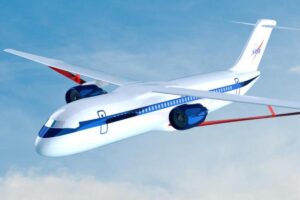Enhance Connectivity: ARINC-429 to MIL-STD-1553 Conversion
Abstract
This white paper delves into the intricacies of converting ARINC-429 to MIL-STD-1553 protocols to improve connectivity in avionics systems. By leveraging high-performance converters, aerospace engineers can achieve seamless data translation, enabling enhanced interoperability and system efficiency. The document explores the technical challenges, practical solutions, and future trends in protocol conversion to support robust avionics communication.
Introduction
Avionics systems rely on efficient communication protocols to ensure the smooth operation of aircraft systems. ARINC-429, a standard in commercial aviation, and MIL-STD-1553, widely used in military applications, represent two distinct communication paradigms. As the aerospace industry increasingly integrates commercial and military technologies, the need for effective protocol conversion has become paramount.
This white paper aims to provide a comprehensive overview of ARINC-429 to MIL-STD-1553 conversion, including the technical differences, challenges, and cutting-edge solutions available to achieve seamless connectivity.
ARINC-429 Protocol Overview
1.1 Background
ARINC-429 was introduced by the Airlines Electronic Engineering Committee (AEEC) to establish a standardized data communication method for commercial aircraft. The protocol is designed for simplicity and reliability, making it a cornerstone of avionics systems.
1.2 Key Features
- Unidirectional Communication: Data flows from a single transmitter to multiple receivers.
- Fixed Data Rates: Operates at 12.5 kbps or 100 kbps.
- Data Word Format: A 32-bit structure divided into label, source/destination identifier, data field, and parity.
- Error Detection: Uses parity bits for basic error-checking.
1.3 Common Applications
- Flight management systems.
- Cockpit instrumentation.
- In-flight entertainment and cabin management.
MIL-STD-1553 Protocol Overview
2.1 Background
MIL-STD-1553 was developed by the U.S. Department of Defense to meet the rigorous demands of military avionics systems. Its robust design and fault-tolerant features make it ideal for mission-critical applications.
2.2 Key Features
- Bidirectional Communication: Supports two-way data transfer between a bus controller and remote terminals.
- Dual-Redundant Architecture: Ensures reliability and fault tolerance.
- Time-Division Multiplexing: Organizes communication into scheduled time slots.
- Error Detection and Correction: Utilizes Manchester encoding for enhanced data integrity.
2.3 Common Applications
- Weapon systems integration.
- Radar and sensor data communication.
- Spacecraft and satellite control.
The Need for Protocol Conversion
3.1 Bridging Commercial and Military Systems
As avionics systems evolve, the integration of commercial and military technologies has become a necessity. ARINC-429 and MIL-STD-1553 were developed for different operational environments, creating a communication gap that must be bridged for seamless functionality.
3.2 Benefits of Conversion
- Enhanced System Interoperability: Facilitates communication between disparate systems.
- Improved Operational Efficiency: Streamlines data exchange processes.
- Future-Proof Integration: Prepares systems for evolving technologies and mixed-use scenarios.
Technical Challenges in ARINC-429 to MIL-STD-1553 Conversion
4.1 Architectural Differences
- ARINC-429: Unidirectional, point-to-point communication.
- MIL-STD-1553: Bidirectional, time-multiplexed bus communication.
4.2 Data Mapping
Aligning ARINC-429’s 32-bit word structure with MIL-STD-1553’s command-response format requires careful mapping to preserve data integrity.
4.3 Timing Discrepancies
MIL-STD-1553’s time-division multiplexing introduces complexities in synchronizing data transmission with ARINC-429’s continuous flow.
4.4 Error Handling
Ensuring consistent error detection and correction between the protocols is critical for reliable communication.
High-Performance Conversion Solutions
5.1 Hardware-Based Converters
Hardware solutions provide real-time, high-speed conversion with minimal latency, making them ideal for mission-critical systems.
Features
- Rugged and compact designs for aerospace applications.
- Built-in error-checking mechanisms.
- High-speed processing for real-time translation.
Benefits
- Minimal latency.
- High reliability in extreme environments.
- Simplified system integration.
5.2 Software-Based Converters
Software solutions are more flexible and cost-effective, suitable for systems with embedded computational resources.
Features
- Configurable data mapping.
- Scalable to accommodate future updates.
- Cost-efficient implementation.
Benefits
- Lower upfront costs.
- Adaptable to evolving system requirements.
5.3 Hybrid Solutions
Hybrid converters combine the strengths of hardware and software approaches, offering a balanced solution for complex avionics systems.
Key Considerations for Implementation
6.1 System Requirements
Evaluate the specific communication needs, such as data rate, error tolerance, and real-time performance.
6.2 Environmental Factors
Consider operating conditions, including temperature extremes, vibration, and electromagnetic interference.
6.3 Scalability
Choose solutions that can accommodate future expansions and technology upgrades.
6.4 Cost vs. Performance
Balance the initial investment with long-term operational efficiency and maintenance costs.
Case Studies
7.1 Commercial Aircraft Modernization
A major airline retrofitted its fleet with ARINC-429 to MIL-STD-1553 converters to integrate advanced navigation systems. The hardware-based solution achieved seamless interoperability, enhancing operational efficiency.
7.2 Military Helicopter Upgrades
A defense contractor implemented hybrid converters in a fleet of helicopters to enable communication between legacy ARINC-429 avionics and MIL-STD-1553-compatible weapon systems. This approach ensured real-time data exchange and reduced latency.
7.3 Satellite Communication Systems
A space agency employed software-based converters to enable ARINC-429 data streams to interface with MIL-STD-1553 spacecraft control systems, achieving cost-effective integration without compromising performance.
Future Trends
8.1 AI and Machine Learning
Artificial intelligence is being integrated into converters to optimize data mapping and enhance error detection capabilities.
8.2 IoT in Avionics
The rise of the Internet of Things (IoT) is driving demand for smarter, more interconnected avionics systems, increasing the need for versatile protocol converters.
8.3 Emerging Standards
New protocols such as ARINC-664 and advanced MIL standards are gaining traction, offering higher data rates and improved scalability.
Conclusion
ARINC-429 to MIL-STD-1553 conversion is essential for achieving seamless communication in modern avionics systems. By leveraging high-performance converters, aerospace engineers can bridge the gap between commercial and military protocols, ensuring robust, efficient, and future-ready connectivity. As technology advances, innovative solutions will continue to simplify protocol conversion, supporting the evolving needs of the aerospace industry.





